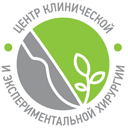Nephrectomy
Search by category
Laparoscopic radical right nephrectomy with aortocaval lymphadenectomy
The author: Puchkov K.V.
Laparoscopic radical right nephrectomy with aortocaval lymphadenectomy.
Professor Puchkov K.V. is performing an operation (2017).
In this film the technique of laparoscopic right nephrectomy for malignant tumour (7 cm) is presented. Before operation MSCT with water-soluble contrast agent has been done. And in the aortocaval space the increased lymphatic nodes up to 4 cm have been found out. Access to hilum of kidney is done by means of bringing down the hepatic angle of the large colon and tissue dissection between Toldt’s fascia and fascia Gerotae by means of a 5 mm LigaSure (MEDTRONIC COVIDIEN) instrument and Karl Storz Company instruments. Then mobilization of duodenum according to Kocher is performed, with exposure of the inferior vena cava and gonad vein. At the next stage aoptocaval lymphadenectomy is performed, using a 5 mm Harmonic Scalpel Ethicon instrument. Ureter is transected at the level of the common iliac artery. Then the renal artery is exposed and clipped. The renal vein is stitched and transected by a 45 mm Endo GIA MEDTRONIC COVIDIEN apparatus with vascular casette. The preparation and removed lymphatic nodes are placed into a special plastic container MEDTRONIC COVIDIEN, that is removed through the umbilical access. Operation time is 1 hour 20 minutes.
You can read about this technique in detail on the personal cite of Professor Puchkov Konstantin Viktorovich. To go to the link.
Laparoscopic left nephrectomy (tumour size is 12 cm, overweight is 62)
The author: Puchkov K.V.
Laparoscopic left nephrectomy (tumour size is 12 cm, overweight is 62 ).
Professor Puchkov K.V. is performing an operation (2015).
In this film the technique of laparoscopic left nephrectomy for renal cancer (tumour size is 12 cm) is demonstrated. Access to kidney hilum is by means of bringing down the splenic angle of the large colon and dissection of tissues between Toldt’s fascia and fascia Gerotae by a 5 mm LigaSure (MEDTRONIC COVIDIEN) instrument and Karl Storz Company instruments. For making dissection easier in kidney hilum the descending part of the large colon is moved medially by soft 10 mm forceps. Ureter is transected by a 5 mm LigaSure instrument. The renal vein and artery are stitched and transected by Endo GIA MEDTRONIC COVIDIEN apparatus with a 45 mm cassette. The preparation is placed into a special plastic container MEDTRONIC COVIDIEN, that is removed through the enlarged umbilical access. At the end of the film the removed preparation is shown (the sizes are as follows: 40x25 cm), and the way the abdominal wall looks like after the operation. Operation duration is 1 hour 30 minutes.
You can read about this technique in detail on the personal cite of Professor Puchkov Konstantin Viktorovich. To go to the link.
Laparoscopic left nephrectomy
The author: Gallyamov E.A.
Laparoscopic left nephrectomy.
Professor Gallyamov E.A. is performing an operation (2013).
The author is commenting on his operation. In the film the technique of laparoscopic left nephrectomy for renal cancer is presented. The access to kidney hilus is done by bringing down the splenic angle of the large colon and dissection of tissues between Toldt’s fascia and Fascia Gerotae by a 10 mm LigaSure (MEDTRONIC COVIDIEN) instrument and Karl Storz Company instruments. The renal vein and artery are ligated by the system Weck Hem-o-Lock and are transected by the endoscopic scissors. The preparation is placed into a special plastic container and is removed through the access according to Pfannenstil.
You can read about this technique in detail on the personal cite of Professor Puchkov Konstantin Viktorovich. To go to the link.
Laparoscopic right nephrectomy
The author: Puchkov K.V.
Laparoscopic right nephrectomy
Professor Puchkov K.V. is performing an operation (2013).
This video presents the technique of laparoscopic right nephrectomy for benign tumour (6 cm). An access to kidney hillus is done due to bringing down the hepatic angle of the large colon and dissection of tissues between Toldt’s fascia and fascia Herotae by a 5 mm LigaSure instrument (MEDTRONIC COVIDIEN) and instruments of Karl Storz Company. The duodenum mobilization is performed according to Kocher, with the exposure of inferior vena cava and the gonadal vein. Ureter is transected. Then the renal artery is exposed and clipped. The renal vein is stitched and transected by Endo GIA1 apparatus MEDTRONIC COVIDIEN, using a 45 mm vascular casette. Preparation is placed into a special plastic container MEDTRONIC COVIDIEN, that is removed through the umbilical access. Operation time is 40 minutes.
You can read about this technique in detail on the personal cite of Professor Puchkov Konstantin Viktorovich. To go to the link.
Simultaneous laparoscopic cholecystectomy and right nephrectomy
The author: Puchkov K.V.
Simultaneous laparoscopic cholecystectomy and right nephrectomy.
Professor Puchkov K.V. is performing an operation (2011).
In this video the technique of classical laparoscopic cholecystectomy for chronic calculous cholecystitis, using 4 ports, is demonstrated. Then, using those ports and a 10 mm LigaSure MEDTRONIC COVIDIEN instrument, right nephrectomy with lymphadenectomy for renal cancer is performed. Attention should be paid to the technique of duodenum mobilization according to Kocher, to fat dissection along the inferior vena cava and transection of the gonadal vein. Then the lower surface of fascia Gerotae is exposed, and transection of ureter takes place. After that the consecutive stitching and transection of the renal artery and vein are done by means of the endoscopic stitching apparatus. The kidney is exposed en block with preserving the adrenal gland. The preparation is placed into a special plastic container MEDTRONIC COVIDIEN, that is removed via 4 cm incision.
You can read about this technique in detail on the personal cite of Professor Puchkov Konstantin Viktorovich. To go to the link.
Laparoscopic radical right nephrectomy with aortocaval lymphadenectomy and preserving of the adrenal gland
The author: Puchkov K.V.
Laparoscopic radical right nephrectomy with aortocaval lymphadenectomy and preserving of the adrenal gland.
Professor Puchkov K.V. is performing an operation (2005).
A 60 year-old male patient is being operated on for renal cell carcinoma (RCC) T1b N1 M0 G2. On the image of MSCT with contrast enhancement 2 enlarged lymphatic nodes up to 2 cm have been found out in the aortocaval space. In this video the technique of laparoscopic radical right nephrectomy with aortocaval lymphadenectomy and preserving of the adrenal gland (tumour is localized in the lower pole of kidney) is demonstrated. Access to kidney hilum is due to bringing down the hepatic angle of the large colon and dissection of tissues between Toldt’s fascia and fascia Gerotae. This stage is performed by 5 mm monopolar scissors and a 10 mm LigaSure (COVIDIEN) instrument. Then duodenum mobilization according to Kocher is done, with exposure of the inferior vena cava and the gonadal vein. During the next stage aortocaval lymphadenectomy with visualization of the left renal vein and preliminary clipping of the right renal artery is performed, using 5 mm monopolar scissors and a 10 mm LigaSure (COVIDIEN) instrument. Ureter is transected at the level of the common iliac artery. Then the renal vein is exposed, clipped and transected. At the final stage nephrectomy is performed with preserving of the right adrenal gland. The preparation and removed lymphatic nodes are placed into a special plastic container COVIDIEN that is removed through the access in the right iliac area (15 years ago the patient was undergone open appendectomy). Operation duration is 1 hour 40 minutes.
You can read about this technique in detail on the personal cite of Professor Puchkov Konstantin Viktorovich. To go to the link.





 Video of operations
Video of operations

